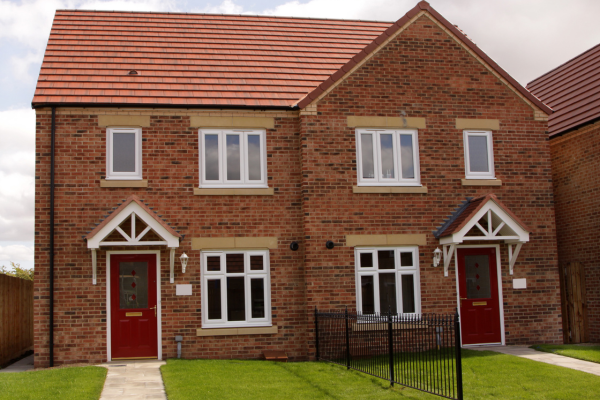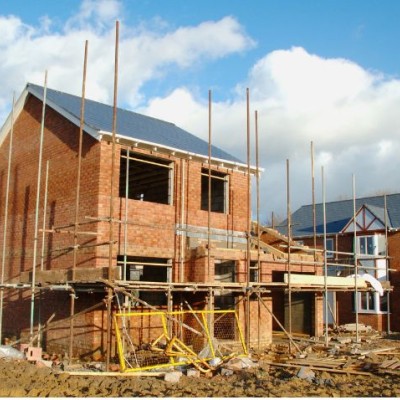The pros and cons of buying a new build vs. an older property

Historically, older properties have been generally viewed as more desirable than new builds, mainly because their supply is finite and they can be in the very best locations. In addition, you tend to get a larger garden and driveway than with many newer homes. And, because of the limited supply of these ‘character’ properties, they have usually increased in value well and sold for more than an equivalent-sized new build.
But times are changing and environmental considerations are a big reason. Rising energy costs and the drive for the UK to become carbon-neutral are making newer, eco-friendly homes much more desirable. No matter how well you insulate and double-glaze a Victorian, Edwardian or Georgian home, making it as energy efficient as a well-constructed modern build is extremely difficult and can be very costly.
Lifestyles and priorities are also shifting, and many people now don’t want a large garden to have to look after or a property that needs constant maintenance – and the reality is that older properties do require you to spend more time and money on repairs. It’s becoming more commonplace to eat out regularly and take several holidays a year, and there’s the almost unavoidable cost of keeping up to date with all the tech appliances and gadgets we rely on these days. So an increasing number of people simply aren’t willing to invest all their money in their home any more. Some prefer to have a more modest property that’s cheaper to run, easy to maintain, and that they can ‘lock up & leave’.
One thing that’s worth pointing out is the difference in room sizes. While it’s certainly true that in larger period homes – three-bed semis and upwards – the ceilings are usually higher than in new builds and rooms can be more spacious, in smaller properties the dimensions are often on a par. And newer homes generally have more bathrooms and en-suites, so even if some rooms are a little smaller, there isn’t much difference in the total internal square footage.
Of course, there’s no denying that the majority of new build developments are likely to be filled with homes that are either identical or very similar in look and layout, and that’s not appealing to everyone – especially those who have always lived in older properties.
However, if it’s financially viable for you, why not consider a custom build or self-building? The latest official government council figures for self-build and custom housebuilding registers England show the number of registrants in the year to October 2023 was up 4% from the year before, and figures from the independent Right to Build Register suggest an even higher level of interest.

What’s the difference between self-build and custom building?
Self-build is where you’re in charge of the whole process, from finding a plot of land and gaining planning permission to designing your home and hiring contractors. While it gives you maximum flexibility, it can be expensive and time-consuming – although you do have the opportunity to build exactly what you want (planning permitted!).
With custom build, you work closely with a developer, who deals with most of the project on your behalf. You can buy anything from a serviced plot that you then design the home for, to a tailored ‘turnkey’ where you simply pick your layout and finished from the developer’s options.
And if you do want to build a new home in England, you might be able to take advantage of the government’s ‘Help to Build’ scheme. This is an equity loan that ranges from 5% to 20% of the total cost (up to 40% in London), which you can apply for as long as you have a 5% deposit and can secure a self-build mortgage from a lender registered with the scheme. Wales and Scotland have their own schemes. Find out more on the GOV.UK website.

In summary, both types of properties have their pros.
New Builds
- Better energy efficiency – Modern insulation, double glazing, and energy-efficient appliances help reduce utility bills.
- Low maintenance – Everything is brand new, meaning fewer repairs and less upkeep in the early years.
- Warranty protection – Most new builds come with a 10-year structural warranty, offering peace of mind.
- Customisable features – Buyers may have options to choose finishes, layouts, or upgrades before completion.
Older Properties
- Character and charm – Period features such as fireplaces, high ceilings, and intricate moldings add unique appeal.
- Established neighbourhoods – Traditional homes are often located in well-developed areas with mature trees and amenities.
- Potential for renovation – More scope for personalising, extending, or increasing value through refurbishments.
- Stronger build quality – Older homes are often built with durable materials, such as solid brick or stone, which can outlast modern construction.
If you’re looking to buy or sell, just get in touch with your nearest branch and speak to one of our sales experts.
Looking for advice?
If you're looking to let or sell your property, we can help. Get in touch with your local branch or book in for a property valuation.

Contact Us
Got a question, general enquiry or something else?
You may also like
Since we started in 1987 we have grown to one of the UK’s largest property groups, we can save you time and money by offering a range of services and expertise under one roof.
 The pros and cons of buying a new build vs. an older property
The pros and cons of buying a new build vs. an older property
 How to save for a home to buy when renting
How to save for a home to buy when renting
 Garden outbuilding ideas to consider in 2025
Garden outbuilding ideas to consider in 2025
 How to choose the right letting agent
How to choose the right letting agent
 How will Labour's new planning bill affect the property market?
How will Labour's new planning bill affect the property market?
 What type of tenant should I aim to attract, and how?
What type of tenant should I aim to attract, and how?
 11 sustainable cleaning tips for your home
11 sustainable cleaning tips for your home
 The best apps for tracking and reducing household expenses
The best apps for tracking and reducing household expenses
 10 staging tips to sell your home fast!
10 staging tips to sell your home fast!